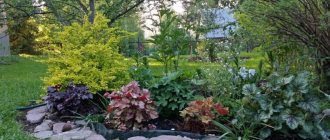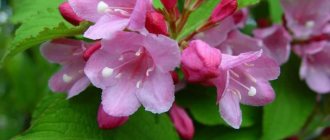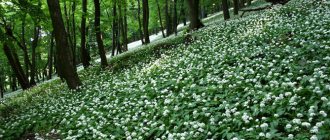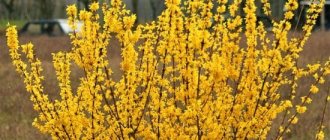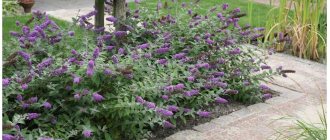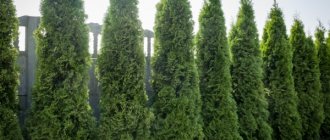- September 5, 2018
- Trees and shrubs
- Malysheva Irina
Ancient legends of Scotland report that of the many plants, only heather (see photo in the article) agreed to the Creator’s proposal to settle on inhospitable rocky hills, which have long been blown by cold winds. His reward was endurance, a pleasant aroma and an attractive appearance. You can see the heather in bloom below.
Most often, in those harsh places where heather grows, no other plants live. Sometimes it occupies large areas, which it colors whimsically during the flowering season. Heather is the plant that gives its name to September. One of the Slavic names for this month of autumn is associated with the time of flowering of heather. “Verasen” - in Belarusian, in Polish - wrzesień, in Ukrainian - “veresen”.
wild nature
Common heather is the name given to a pretty, beautifully flowering, hardy and most unpretentious shrub. It is believed that he set off on his journey around the world from Southeast Asia. Most often, these shrubs are found in pine, light mixed forests. Heather can choose peat or forest burnt areas. You can clearly see what heather looks like in the photo.
The plant is a bush of many shoots. They are densely covered with very small leaves of an unusual triangular shape. Heather shoots play with a variety of green shades. There are varieties of heather that have reddish leaves. There are unusual, attractive colors in muted copper, bright yellow or silver.
The small flowers of the plant are collected in dense inflorescences of six to thirty pieces. Usually in late summer - early autumn, the heathers are colored with deep purple, delicate pink, snow-white and even bright yellow. Under natural conditions, heather shrubs reach a height of approximately twenty-five centimeters.
An amazing long-living plant. There are specimens thirty and even fifty years old. They reach a diameter of more than three meters! In such a huge bush, the branches fall on the soil and take root, creating layering. But usually in nature, heather reproduces by seeds. Young bushes bloom when they reach the age of five years. Heather is an excellent honey plant that provides food for bees and many other insects.
Interesting varieties
It is better to choose heather varieties that do not bloom at the same time. When purchasing, you will notice that some varieties are already blooming, others are just developing buds. You need to focus on the color of the flowers and the degree of their development. The correct selection of varieties will allow you to enjoy the flowering of heather for as long as possible.
Interesting varieties:
- "Alicia" - white flowers;
- "Anette" - pink flowers;
- "Boskoop" - purple flowers;
- "Orange Queen" - purple flowers;
- "Red Star" - pink flowers;
- "White Lawn" - white flowers.
Rated by man
An unpretentious and unusually attractive plant with its originality, heather has found wide use among urban landscape designers. It is grown with pleasure both in small gardens and in spacious summer cottages. This shrub looks harmonious with tall or dwarf conifers. Goes well with ferns, alpine plants, and berry crops. Forms cozy clearings under medium-sized deciduous trees. The photo below shows heather in harmony with spruce trees.
A shrub growing in natural conditions does not take more moisture from the surrounding soil than it needs to support its normal life activity. This unusual property of plants is called “physiological dryness”.
In small garden plots, heather looks great when placed in decorative containers, boxes and pots. This adds style to the decorative design of the garden plot.
It will fit well into the home interior as an unpretentious but beautiful indoor plant.
Plant partners
A plant such as heather is loved by many gardeners due to its beautiful appearance, a huge variety of flowers, ease of cultivation, and a fairly long flowering period.
This culture will decorate any garden, summer cottage, terrace or even balcony. It can be grown in a group, for example, different varieties, or combined with other flowers and plants in general. Also, heather goes very well with decorative stones. If you need a good cover plant, then you should turn your attention to heather.
This wonderful crop will look good on the site along with dwarf coniferous creeping plants; ferns and rhododendrons are also suitable for them.
And when planting a whole garden of different types of heather, do not forget that it is a good honey plant and, accordingly, its wonderful aroma will attract many bees, so be careful.
Suitable soil
The plant prefers to live on peaty, acidic soil. It begins to hurt if planted in soil with an alkaline reaction. He doesn’t want to put up with an excess of organic matter. In such cases, watering the heather with water acidified with ordinary table vinegar will help. We will have to urgently start preparing suitable soil.
For the comfortable existence of this graceful shrub, a mixture of components is ideal:
- high-moor peat – 3 parts;
- river sand – 1 part;
- pine sawdust – 1 part;
- soil from under growing conifers - 1 part.
Chemical composition
Why did they start using this plant in folk medicine? Common heather has a rich chemical composition. It contains fumaric and citric acids. In addition, the plant contains a significant amount of carotene, resins and gums, mineral compounds, as well as essential oils.
Of course, such a rich composition could not go unnoticed. For centuries, traditional healers and healers have studied the properties of plants and learned to use them for their own purposes. A description of common heather can be found in the notes of doctors of the 18th century. It was used very widely in those days.
So where to place it?
A sunny place is perfect for a heather garden. It may be flat or slightly hilly.
The top layer of fertile soil is removed from the selected area down to the clay base. Compact the resulting area, water it well with water, stirring apple cider vinegar or regular table vinegar into it. Pour half a glass of vinegar into one bucket of water. The site is now ready to lay the prepared soil that heather prefers. Planting and care in open ground are simple, but are of great importance for its life expectancy.
If in the natural environment heather lives for decades, then in cultivation it exists for about five years. In a well-groomed garden plot, the shrub finds itself in worse conditions, because there are no simple fungi living in symbiosis with heather. Their thread-like mycelium is useful to the plant because it helps its roots absorb nutrients.
You can try to compensate for this soil deficiency by taking planting land from a coniferous forest.
How to care?
The main care is regular watering, spraying the bushes in hot weather and formative pruning. The root system of heathers is compact. It has a large number of short branched roots, so plants cannot extract moisture from deep in the soil. We water the heathers with acidified water so that the top layer of soil is always moist. In summer, heathers suffer from dry air and respond well to spraying.
The first years after planting, heather does not need pruning. Later, in spring or autumn, after flowering, we cut off the old shoots with pruning shears. When pruning, we preserve the natural “shaggyness” of the bushes and the shape of the crown.
Fertilizing heather, as a rule, is not required, since in nature it grows on poor soils. For more luxuriant flowering, you can water the bushes with a solution of complex mineral fertilizer.
Not all varieties of heather winter well in the middle zone, so it is best to cover them in the fall. For them, a thick layer of sawdust, peat, pine or leaf litter is quite enough.
Transplantation and propagation
Don't worry about how to replant heather. No amount of tricks will help: it is difficult for an adult plant to take root in another place. You need to buy it growing in a pot. The roots should retain a lump of earth while planting the bush in the ground.
But a bush already growing in the garden is easy to propagate. You can use heather to propagate in any way:
- rooting of cuttings;
- planting apical cuttings;
- dividing the bush.
Features of heather
This feature should be kept in mind by gardeners who decide to decorate their plots with this plant. Where heather grows there must be mushrooms, but this applies to wildlife. But there are many examples when a gardener buys heather in a specialized store, admires its flowering for a while, and then notices that its beauty begins to fade. And no resuscitation methods work.
So, it’s not for nothing that experienced heather lovers recommend: if you find thickets of heather in the wild and decide to dig up a bush, take as much soil as possible around the plant: most likely, there are either the mushrooms themselves or their spores, without which the heather will not grow.
By the way, this advice also applies to other representatives of the heather family: wild rosemary, bearberry (bear ears), cranberries, lingonberries, etc. berries.
And besides mycorrhiza, all these plants are characterized by a preference for peat soils with pine litter and an acidic environment.
Reproduction by layering
Having chosen a well-grown strong bush, you need to dig a shallow ditch near it. On a flexible, healthy branch, remove all leaves except the top ones.
Bend the branch, securing the part freed from leaves in the groove with a pebble or a piece of wire. Carefully lift the remaining loose top up and tie it to a wooden peg, sticking it into the ground. Pour water into the groove and fill it with soil.
The heather sprig will take root, and next spring it will be an independent bush. It should be cut off from the main mother plant, dug up and, with a clod of earth, transplanted to a permanent place.
Heather is a plant that is quite capable of reproducing by layering and independently if its branches have fallen and taken root. By sprinkling such branches with soil, you can get excellent planting material next year.
Medicinal properties
It should be noted that official medicine has never recognized the possibility of treatment with this plant. But this applies only to Russia. In Germany and Norway, Poland and many other countries, the medicinal properties of common heather are widely known and are used to treat many diseases. This is a fairly powerful sedative, and in large quantities acts like a narcotic. Heather extract improves the secretion of the digestive glands, has an astringent and choleretic agent. But before use, you need to consult a gastroenterologist. In some cases, heather may be contraindicated.
Propagation by apical cuttings
Lignified shoots will be needed. But only those that have no flowers are suitable. This method of propagation is used when the shoots have matured, at the end of the season.
You need to prepare the substrate for planting in advance. Take three parts of loose peat and one part of sand. When placing the cuttings in the prepared soil, they need to be watered a little. Once every ten days, when watering, fertilize with microelements. Cuttings grow best at a temperature of about eighteen degrees. In spring, small heather bushes are ready to be planted in their designated place.
Sowing seeds
Growing heather from seeds is a long and troublesome process that requires patience. However, the seeds of this crop have excellent germination rate - up to 90%.
Seeds are sown in containers without deepening them. For sowing, it is best to take a substrate consisting of coniferous soil, peat and sand. Crops are kept in a warm and bright room. During the first week, the crops are regularly moistened. After just four weeks, sprouts will appear.
Immediately after the emergence of seedlings, they begin to harden off. To do this, first lift the shelter from the container for a short time, and then begin to open the window, and in warm weather, take the plants out into the fresh air. When the sprouts begin to grow, they are picked into separate containers.
Dividing the bush
This method of reproduction is also used at the end of the season - around August or early September. First of all, the selected heather bush is carefully dug out of the ground. Next, remove all dead and old stems. After which they begin to divide the root, making sure that each of the new parts has young shoots.
The resulting small bushes are planted in the designated places. After watering well, the ground near the heather is mulched with peat, pine needle litter, spruce or pine chips. In the bottom photo the heather has been divided.
You can grow new plants using seeds. But this is quite labor-intensive and time-consuming. Therefore, most summer residents and gardeners prefer to buy heather bushes rooted in the ground, ready to move to a new place of residence.
Help for various diseases
Let's take a closer look at how the white flowers of common heather can be useful.
- The plant contains a large amount of vitamins and organic acids, tannins and glycosides. It contains many minerals and other beneficial substances. Of course, this composition helps with any disease, as it allows you to increase the body’s immune response.
- Considering the medicinal properties, it should be noted that it helps with respiratory diseases. Heather is used to effectively treat cough and tuberculosis. But the list does not end there. Kidney stones, joint and bladder ailments, disorders of the gastrointestinal tract, nervous diseases, allergies, non-healing wounds and ulcers - all this is an incomplete list of cases in which this modest plant can help.
- Medicines are prepared from the shoots of the plant, which are used for compresses and baths, lotions and baths.
- It is impossible not to note the anti-inflammatory properties of the plant. Heather helps in the treatment of colds and rheumatism, radiculitis and stomatitis.
- Heather is very effective for insomnia and hypotension. And in combination with hawthorn and valerian, it can be used for heart diseases.
If you purchased seedlings
It is preferable to plant rooted heather plants in the garden in a designated place around May. If it is decided to plant in the fall, then it should be done no later than September so that the seedlings can get stronger and take root before the onset of cold weather.
It is recommended to purchase heather from garden centers or specialized nurseries. Bushes are sold in plastic pots.
How to grow heather in a garden plot? Before planting, purchased seedlings need to be well watered. After carefully removing the heather from the container, carefully straighten the roots, which are usually collected in a lump. A bush with tangled roots will not be able to actively take root for a long time and will die.
A wide hole is prepared for the heather. They never dig it deep, since the roots of the bush are located close to the surface. If the soil in the selected area is clayey and does not conduct water well, arrange drainage. Excessive moisture only harms heather. To do this, before planting the plant, pour a couple of centimeters of pebbles or medium-fraction crushed stone into the planting hole. Then water is poured into it, the seedling is placed, covering it with soil no higher than the root collar.
After planting the plant, the soil needs to be compacted with your hands and watered again. Then the bed around the seedling is mulched with fallen pine needles or peat. Even the bark of coniferous trees is suitable for use.
Varietal diversity
Common heather is the only natural species of the Ericaceae family. But in gardens and parks, various varieties of this plant, obtained through breeding work, now grow. Varietal heathers differ from their ancestor by being more decorative and having a variety of shades of inflorescences and leaves.
Unfortunately, hybrids lose the qualities obtained through selection when propagated naturally (by seeds). Therefore, for new plantings of varietal heather, material is usually purchased from nurseries.
Heather varieties are classified according to plant height:
- tall (50 - 60 cm high),
- medium-sized (height 20 - 30 cm),
- dwarf (creeping, no more than 10 cm in height).
Another classification takes into account the color of leaves and inflorescences:
- with green leaves (Long White, Darkness, Marleen),
- with silvery leaves (Silver Knight, Glendoik Silver, Jan Dekker),
- with golden leaves (Aurea, Orange Queen),
- with double flowers (Beale, Alba Plena),
- with non-opening flowers (Minima, Fritz Kircher, David Eason).
Orange Queen is a tall variety that blooms from August to winter with long inflorescences of white and pink flowers. The leaves are green in summer and turn orange in late August. Differs in frost resistance.
Glendoik Silver is a medium-growing variety, blooms in September - October with lilac-violet long inflorescences. Branches deflected with silvery leaves.
Minima is a dwarf variety that blooms in late summer with short clusters of indehiscent bright pink flowers. The leaves are green in summer and brown in winter.
Heather: planting and care in open ground
First of all, you need to keep the area well-groomed. Regular weeding will protect the soil from depletion. Good growth and the ability to resist diseases of heather will be provided by complex liquid fertilizers for coniferous plants. Only they take into account its need for acidic soil.
In order for the bush to grow thick and delight the eye with its beauty, you need to do a little pruning. The top branches are trimmed in late autumn by about five centimeters. You can prune in the spring, before the buds open.
Heather can hardly tolerate severe frosts. Therefore, it is grown in well-drained soils. This will help avoid freezing of stagnant water and freezing of the heather garden.
Reviews from gardeners growing heather on their property
Maria, 53 years old
I bought Heather by accident. I just liked the look. I started reading at home about what to do with it, and realized that there would probably be another dried flower in the flowerbed. Everything seemed so complicated. But she dropped me off anyway. He survived a winter, then a drought, then another winter. Now I have already planted it and grown into half the garden. I also bought different types. Blooms from late June until winter. Beauty.
Mikhail, 48 years old
A few years ago we finally moved into our house and the question arose of improving the area. There is a problem. The soil is acidic. This narrowed our design options. My wife ordered various seedlings on the Internet, and we got to work. Everything was planted in the fall. There were trees and bushes there. I was worried about how they would survive the winter. Our frosts are severe. Everything took root. Even heathers. Even though I thought the frost would kill them, they were planted too late. 3 years have passed, there are already shoots. Blooms well. The wife is happy.
Ekaterina, 62 years old
I saw heathers at my neighbor's place. They bloom so beautifully. For six months. I asked for a few branches when she was seating them. I had to dig around a bit, it turns out that the soil there is not so easy, it needs to be oxidized. But fortunately, the stores now have everything. I don’t have a plantation yet, but everything is ahead. They don’t need anything except fertilizer now. This can be planted.
What needs to be protected from
The main causes of plant diseases are the unfavorable conditions created for plant growth. It is worth noting that stagnation of water in the root zone, excess nitrogen or mineral fertilizers lead to diseases of the bush, causing wilting of young branches and yellowing of leaves. Be careful when choosing a suitable site.
High soil moisture, like the air, causes late blight. The signs will be visible immediately: the leaves of the heather fall off, and a white-gray coating appears on the branches. Then the young shoots begin to dry out and die. Treatment is started immediately. Sick and dried branches are cut out, the bush is treated with “Topaz”, “Topsin”, “Fundazol”. Three treatments are carried out every ten days.
It will be more reliable to carry out preventive spraying with the same preparations. You will have to do this only twice: in the spring, starting the season, and in the fall, ending it.
Heather is very rarely affected by viruses. Signs of disease on the plant are immediately visible. Shoots and flowers are deformed, the color of the leaves changes. It is necessary to prevent the spread of infection. Affected bushes will have to be dug up and burned. They cannot be put into compost.
Among the pests, heather can be threatened by scale insects. The insect sucks juice from the leaves of the bush. If there are only a few pests, a simple soap solution will help. For a large colony of scale insects, it is necessary to use “Aktellik”, “Bankol”, “Admiral”, “Aktaru” or other broad-spectrum insecticides.
Landscape designers create entire gardens from heather, plant it to decorate rock gardens, and place it along garden paths. Heather borders look impressive against the background of dark coniferous plants.
Heather diseases
With proper agricultural technology, heather shrubs are not affected by diseases and pests. They can get sick under unfavorable growing conditions.
Powdery mildew and rust
The fungal disease manifests itself as a flour-like white coating on the leaves and drying out of young shoots. If the plant is affected by rust, red-brown spots appear on the leaves.
If the disease is not treated, the plants will die. Therefore, at the first signs of rust or powdery mildew, the bushes should be sprayed with a solution prepared from fungicides.
Plant correctly
The seedlings are removed from the pots and the root ball is kneaded with your hands. If the roots are intertwined very tightly, then it is advisable not only to knead them, but also to straighten them. The fact is that heather roots spread horizontally in the soil. Closely intertwined in a pot and bent at the bottom to its middle, they themselves are not able to change the direction of growth. The seedling continues to grow for some time, but later dies due to lack of water and nutrition. The optimal distance between bushes is 40–50 cm. After planting, the soil around the bushes is compacted and the plants themselves are watered.
Article on the topic
Humble perfection. Kuril tea - a shrub for any garden
Application
In folk medicine, various medicinal forms of herbs are used: tinctures and decoctions, ointments and juices, baths and lotions. The description of common heather, a photo of which you can see in the article, makes it clear that collecting plant materials does not present any problems. The spreading bush can be easily trimmed and dried in the shade. So, let's look at the dosage forms:
- Infusion - used internally for urological diseases. It is also prescribed for nervous diseases and stomach disorders. It is very easy to prepare the drug. A tablespoon of dried raw materials is poured with a glass of boiling water. Place the pan with the raw materials on the fire and boil the contents for several minutes, then let it brew.
- Baths and lotions. Recommended for rickets and joint diseases.
- Juice from flowering shoots. Seasonal, but very valuable remedy. Used for diabetes and insomnia. In addition, it is also used as an external agent.

